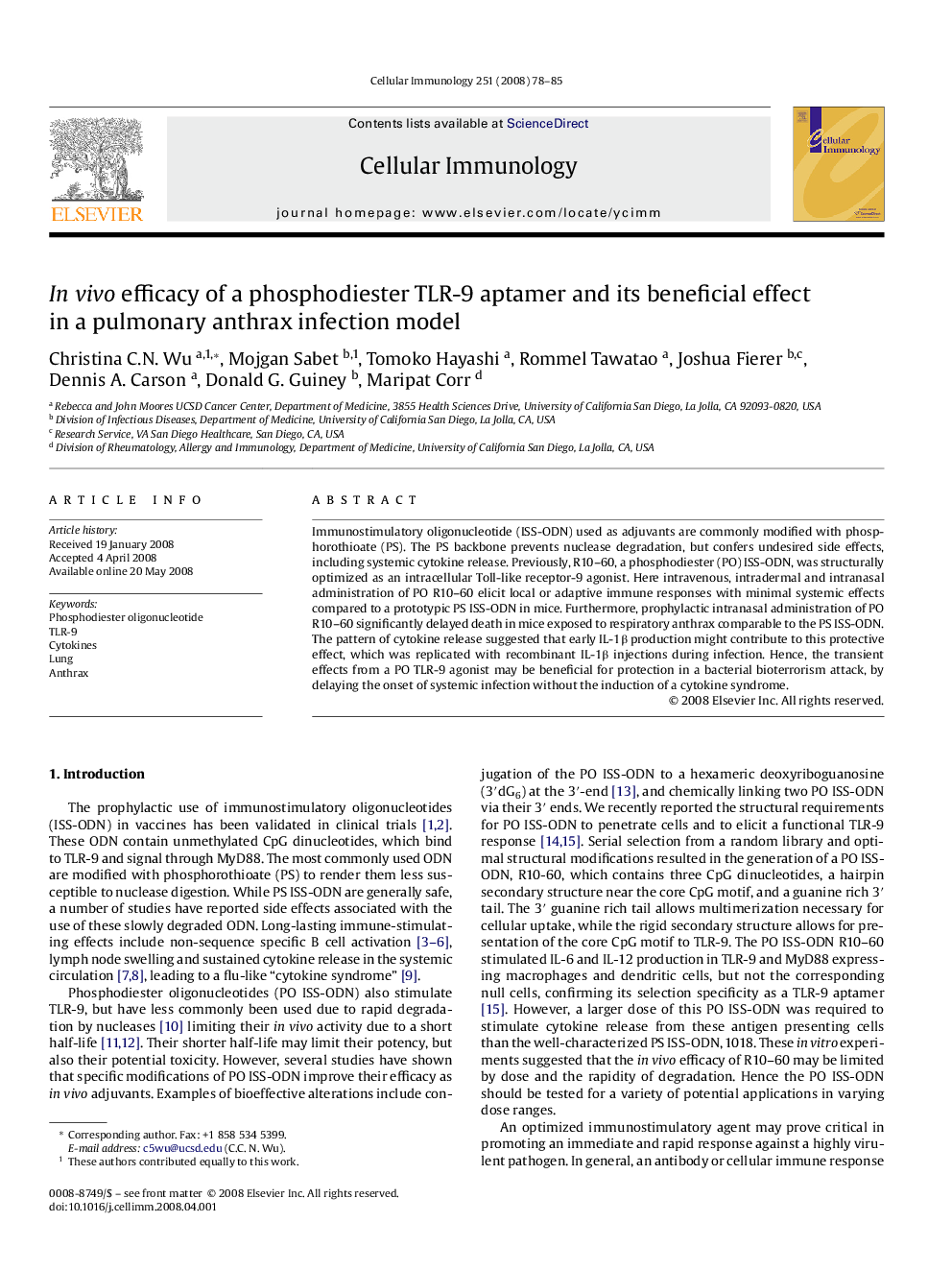| Article ID | Journal | Published Year | Pages | File Type |
|---|---|---|---|---|
| 2167949 | Cellular Immunology | 2008 | 8 Pages |
Immunostimulatory oligonucleotide (ISS-ODN) used as adjuvants are commonly modified with phosphorothioate (PS). The PS backbone prevents nuclease degradation, but confers undesired side effects, including systemic cytokine release. Previously, R10–60, a phosphodiester (PO) ISS-ODN, was structurally optimized as an intracellular Toll-like receptor-9 agonist. Here intravenous, intradermal and intranasal administration of PO R10–60 elicit local or adaptive immune responses with minimal systemic effects compared to a prototypic PS ISS-ODN in mice. Furthermore, prophylactic intranasal administration of PO R10–60 significantly delayed death in mice exposed to respiratory anthrax comparable to the PS ISS-ODN. The pattern of cytokine release suggested that early IL-1β production might contribute to this protective effect, which was replicated with recombinant IL-1β injections during infection. Hence, the transient effects from a PO TLR-9 agonist may be beneficial for protection in a bacterial bioterrorism attack, by delaying the onset of systemic infection without the induction of a cytokine syndrome.
